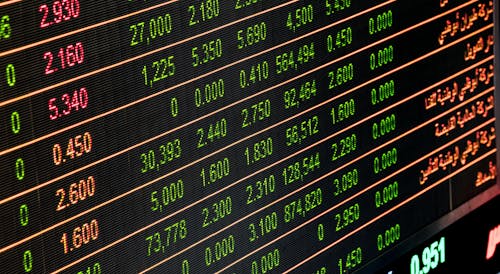Rates Spark: Inversion Stretches Deeper
Curve inversions tell us that we're approaching the end of the rate hike cycle. But that conclusion to hikes is being pushed further into the future, and that is placing upward pressure on long-dated rates. Deeper inversions and further upward pressure on long rates remains likely in the coming weeks. This will change, but not just yet given the latest CPI data.
Image Source: Pexels
A deeper US inversion also point to bigger US cuts down the line...
The terminal Fed funds rate hike discount continues to ratchet higher, now at 5.45%, and attaching a 40% probability to a 25bp hike in July (following 3*25bp through Mar, May and June). This is coinciding with upward pressure on the US 10yr, which has now re-touched 4%. Even at 4%, it’s almost 150bp below the market-projected funds rate. That’s unprecedented versus previous cycles over the past four decades (you have to go back to the 1970’s to see something different). And even then, the biggest discount is when the Fed is about to cut, not as the Fed is still hiking. That ensures that every build in the projected terminal rate directly impacts the 10yr rate. Hence the touch at 4%.
Upward pressure dominates in Europe too. New cycle highs have been seen this week on both ends of the curve, with the German 2yr now at 3.2% and the 10yr at 2.7%. The inversion is less dramatic, but is deepening all the time. Pressure on the European Central Bank to keep hiking is coming from the run of individual country inflation data so far this week, the latest being Germany. Eurozone inflation may be off the highs hit late in 2022 but has blipped up again for February, and a handle of 8% for German inflation (and closer to 9%) continues to touch a nerve. There’s a terminal Refi rate of 3.75% now priced. That can be compared with a 10yr Euribor rate now at 3.25%. Again the inversion here is far less dramatic than the US one.
Relative inversions tell us something about the market discount for interest rate cuts down the line. So the 10yr Euribor rate 1yr forward is priced at 3.2% (5bp lower versus spot), while the 10yr SOFR rate 1yr forward is priced at 3.5% (23bp lower versus spot). There is a slight credit inflation in the Libor rate (Euribor) versus the risk free rate (SOFR), but even accounting for this the market discounts bigger future cuts from the Fed (relative to the ECB) and a convergence of dollar market rates to euro ones. We’d agree with this, and in fact we’d have a more pronounced and quicker convergence later in 2023 (more aggressive than the forward discount). This reflects a likely higher degree of stickiness attached to eurozone inflation.
Ahead we’ll get the eurozone inflation estimate for February, with the market expecting core to stay steady at 5.3% year-on-year and headline slowing to 8.3% YoY. Based off recent releases, an upward surprise would not in fact be a surprise and would keep the rising rates narrative to the fore. Meanwhile, in the US we get jobless claims that continue to show labor market strength at sub-200k in initial claims. At the same time, latest ISM readings point to contraction in manufacturing, employment and new orders; these remind us of the bigger picture slowdown narrative. Based off this, deeper inversions are probable in both the US and the eurozone in the coming weeks.
This won't last though. The most striking changes on curves as we progress through the coming quarters will be pronounced dis-inversion. Longer tenor rates can go higher first, but then later, front-end rates will collapse lower as the peak in official rates is eventually discounted with more conviction. We're just not there yet.
More By This Author:
U.S.: Production Sectors Continue To Struggle, But China Reopening Offers Some HopeChina’s Solid PMIs Hint At A High GDP Target At The Two Sessions
FX Daily: Upbeat China PMIs Lift The Mood
Disclaimer: This publication has been prepared by ING solely for information purposes irrespective of a particular user's means, financial situation or investment objectives. The information ...
more



